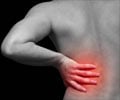Active life is quite possible after back surgery, US researchers have shown by studying the dramatic progress achieved by premier football players.
Active life is quite possible after back surgery, US researchers have shown by studying the dramatic progress achieved by premier football players. These elite athletes spend a lot of time in a squatting stance that puts tremendous stress on their spine.
Now as many as 80 percent of NFL linemen were able to return to play many more games after the surgery, say the scientists with the Northwestern Medicine. The study is encouraging to average people who are often fearful of becoming physically active after disc surgery, said lead study author Joseph Weistroffer, M.D., assistant professor of orthopaedic and of neurological surgery at Northwestern University Feinberg School of Medicine and a spine surgeon at Northwestern Memorial Hospital.“Many times after the surgery, people are afraid to go back and live their lives,”Weistroffer said. “They don’t want to hurt themselves and have another herniation. If a football player can get back to playing football again, you, too, can resume normal life. Just because you had disc surgery doesn’t mean you are going to be broken for life.”
The study will be published in the March issue of the Journal of American Sports Medicine. The coauthor is Wellington Hsu, M.D., assistant professor of orthopaedic and of neurological surgery at Feinberg and a spine surgeon at Northwestern Memorial.
For the study, Northwestern researchers scoured two decades of public records to determine the career outcomes of 52 NFL offensive and defensive linemen who had had herniated disc surgery during their active careers. Not only did 80 percent of the players return to the game, they also played an average of 33 games during three years after the surgery. More than half of them attained the prestigious distinction as starter at their position.
“The numbers show they were able to get back to the extreme and sustained activity of playing football on an NFL level,” Weistroffer said. “That’s significant.” There is a paucity of evidence showing clinical outcomes for high-end athletes after herniated disc surgery, he noted.
Discs, disk-shaped tissue that separates the bones of the spinal column, start to wear out as people age, Weistroffer said. The sidewall of the disc may tear, but usually heals on its own. Occasionally disc material will squirt out through the tear and pin the nerve root against the bone, causing extreme back and leg pain. Most of the time the body can heal itself within six to 12 weeks. If healing doesn’t occur, surgery can relieve the pressure on the nerve root and in many cases, relieve the pain, Weistroffer said.
Advertisement
Advertisement







